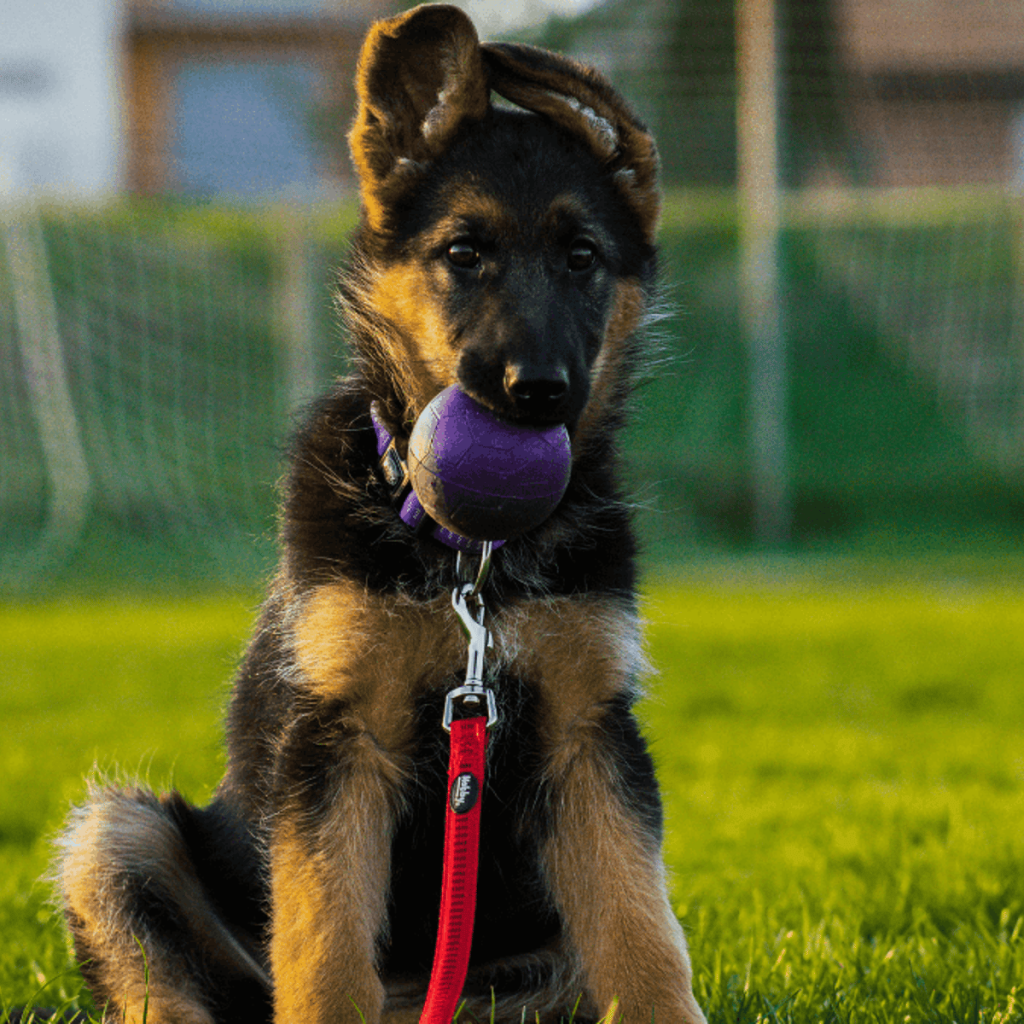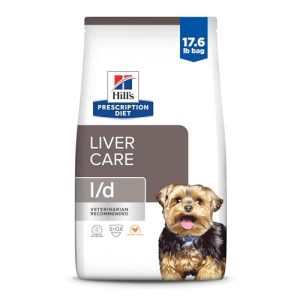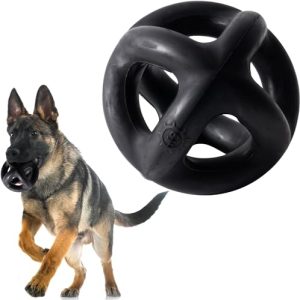Bringing a Germanese puppy into your home is exciting, but training can feel overwhelming. You want your puppy to grow into a well-behaved, happy companion, right?
The good news is, with the right tips, you can make training easier and even enjoyable for both of you. You’ll discover simple, effective Germanese puppy training tips that fit your busy life. Ready to turn your puppy into the best-behaved friend you’ve always wanted?
Keep reading—your journey to a well-trained Germanese starts here.

Credit: smart.dhgate.com
Choosing The Right Germanese Puppy
Choosing a Germanese puppy is an important decision. The right puppy will fit well with your family and lifestyle. You should learn what traits to look for before making a choice.
Finding a responsible breeder is also key. A good breeder helps ensure your puppy is healthy and well-socialized.
Traits To Look For
Germanese puppies have unique traits. Look for these qualities to find a good match:
- Alert and curious eyes showing intelligence
- Strong body with balanced proportions
- Friendly and calm behavior around people
- Clean ears and shiny coat indicating health
- Good social skills with other dogs and children
Finding Reputable Breeders
A reputable breeder cares about the puppy’s health and future. Ask these questions to find a good breeder:
| Question | Reason to Ask |
| Do you perform health tests on the parents? | To ensure puppies are free from genetic diseases |
| Can I meet the puppy’s parents? | To see their temperament and condition |
| How do you socialize your puppies? | To check if puppies are comfortable with people and other pets |
| What is the puppy’s vaccination history? | To confirm the puppy is protected from common illnesses |
| Do you provide a health guarantee? | To protect your investment in case of health issues |
Essential Supplies For Training
Training your Germanese puppy needs the right tools and space. Good supplies help your puppy learn fast and stay safe.
This guide covers the must-have training tools and how to set up a puppy-friendly area at home.
Must-have Training Tools
Use tools that make training clear and fun. These help your puppy focus and respond well.
- Collar and leash: Keep control and teach walking skills.
- Treats: Reward good behavior quickly and kindly.
- Clicker: Mark correct actions with a sound.
- Chew toys: Keep teeth busy and reduce biting.
- Training pads: Help with housebreaking indoors.
- Crate: Create a safe, calm space for your puppy.
Setting Up A Puppy-friendly Space
Your puppy needs a quiet, safe spot for training and rest. Make sure the area is easy to clean and free of dangers.
| Item | Purpose |
| Soft bed | Comfort and rest |
| Water bowl | Stay hydrated |
| Training pads | Housebreaking help |
| Toys | Keep puppy engaged |
| Baby gates | Limit puppy’s access |
Basic Obedience Commands
Training your Germanese puppy in basic commands helps build good behavior. Early training creates a strong bond and keeps your dog safe.
Focus on clear commands and consistent practice. Short sessions are best to keep your puppy engaged and eager to learn.
Sit
Teaching your puppy to sit is a simple way to start obedience training. Use a treat to guide your puppy into the sitting position. Say “sit” clearly and give the treat when your puppy follows the command. Repeat this often to build understanding.
Stay
The “stay” command teaches your puppy patience and control. Ask your puppy to sit first. Then, hold your hand up like a stop sign and say “stay.” Take a few steps back. If your puppy stays, return and give a reward. Practice increasing distance slowly.
- Start with short stays
- Use a calm voice
- Reward immediately after success
- Increase time and distance gradually
Come
The “come” command brings your puppy to you. Use a happy tone and say “come.” You can kneel to appear friendly. Reward your puppy when it reaches you. Practice in a safe, enclosed area to avoid distractions.
Leash Training Tips
| Tip | Details |
|---|---|
| Use a Comfortable Leash | Choose a leash that fits your puppy’s size and is easy to hold. |
| Start Indoors | Practice walking on a leash inside before going outside. |
| Reward Good Behavior | Give treats when your puppy walks calmly beside you. |
| Be Patient | Do not pull the leash. Let your puppy explore gently. |

Credit: www.latimes.com
Housebreaking Strategies
Training your Germanese puppy to go outside is very important. Housebreaking helps keep your home clean and your puppy happy.
Use clear methods and stay patient to see good results with your puppy.
Crate Training Benefits
Crate training helps your puppy learn where to rest and limits accidents inside. It provides a safe space for your dog.
- Prevents your puppy from roaming and making messes.
- Makes travel and vet visits less stressful.
- Teaches your puppy to hold their bladder until taken outside.
- Helps your puppy feel secure and calm.
Establishing A Bathroom Routine
Setting a regular bathroom schedule helps your Germanese puppy learn when to go outside. Consistency is key.
| Time | Activity |
| Morning | Take puppy outside immediately after waking up |
| After Meals | Bring puppy out to the bathroom area |
| After Play | Take puppy outside to relieve themselves |
| Before Bedtime | Final bathroom break before sleeping |
Socialization Techniques
Socialization helps your Germanese puppy grow into a confident dog. Early exposure to different people and animals is key. It also teaches your puppy how to behave in new places.
Good social skills reduce fear and aggression. Start socializing your puppy as soon as possible. Use gentle and positive methods for best results.
Introducing To Other Pets
Introduce your puppy slowly to other pets at home or outside. Watch their body language and keep meetings short. Let your puppy sniff and explore safely.
- Choose calm and friendly pets for introductions
- Keep both animals on a leash at first
- Use treats to reward good behavior
- Stop if either pet shows signs of stress
- Repeat meetings daily for better comfort
Exposure To New Environments
Take your puppy to different places like parks, streets, and pet stores. New sounds and smells help your puppy adapt. Keep visits short and fun.
| Place | What to Watch For | Tips |
| Park | Other dogs and people | Keep your puppy on leash |
| Pet Store | New smells and noises | Use treats and praise |
| Street | Cars and bikes | Walk on quiet streets first |

Credit: www.reddit.com
Handling Common Behavioral Issues
Training a Germanese puppy can be challenging. Puppies often show behaviors that need guidance. Early training helps build good habits.
Two common issues are biting and chewing, and separation anxiety. Each needs specific care and attention to manage well.
Biting And Chewing Control
Puppies bite and chew as a natural way to explore. They also do this when they feel bored or teething. Teaching them what is okay to chew is important.
- Provide plenty of chew toys to distract your puppy.
- Use firm “no” when biting happens.
- Redirect biting to a toy immediately.
- Avoid rough play that encourages biting.
- Praise calm and gentle behavior often.
Dealing With Separation Anxiety
Separation anxiety causes stress when your puppy is alone. Signs include barking, whining, and destructive behavior. You can help your puppy feel safe.
| Action | Purpose | Tip |
| Short absences | Build tolerance | Start with a few minutes away |
| Create a safe space | Comfort your puppy | Use a crate or quiet room |
| Leave toys | Keep puppy busy | Choose interactive or chew toys |
| Stay calm | Reduce anxiety | Do not make a big deal when leaving or coming back |
| Practice routine | Provide consistency | Keep feeding and walking times regular |
Positive Reinforcement Methods
Training a Germanese puppy is easier with positive reinforcement. This method rewards good behavior.
Positive reinforcement helps your puppy learn fast and builds trust between you.
Using Treats And Praise
Treats motivate your Germanese puppy to follow commands. Use small, tasty treats your puppy likes.
Praise your puppy with kind words and petting to show you are happy. This makes training fun.
- Give a treat right after the puppy does the right thing
- Say “Good job!” or “Well done!” with a happy voice
- Use gentle petting as a reward
- Use treats in short training sessions to keep attention
Timing And Consistency Tips
Give rewards immediately after the good behavior. This helps your puppy connect actions with rewards.
Be consistent with commands and rewards. Use the same words and actions every time.
- Reward within 2 seconds of correct behavior
- Train at the same times each day
- Use clear and simple commands like “Sit” and “Stay”
- Practice often but keep sessions short (5-10 minutes)
Advanced Training Tips
Training a Germanese puppy beyond basic commands builds their skills and confidence. Advanced training needs patience and clear guidance.
Use positive methods to keep your puppy eager and focused. This helps them learn faster and enjoy the process.
Teaching Tricks And Commands
Start teaching new tricks once your puppy knows basic commands well. Choose simple tricks like “spin” or “paw” to keep it fun.
- Break tricks into small, easy steps
- Use treats as rewards after each step
- Repeat the steps in short sessions daily
- Be patient and give clear signals
- Gradually reduce treats as your puppy learns
Using Clicker Training
Clicker training helps your puppy link a sound with good behavior. The click sound marks the exact moment they do the right thing.
| Step | Action | Purpose |
| 1 | Introduce clicker sound with treat | Associate click with reward |
| 2 | Click when puppy does desired behavior | Mark correct action |
| 3 | Give treat immediately after click | Reinforce behavior |
| 4 | Practice commands using click and treat | Build consistent responses |
| 5 | Fade treats, keep click for praise | Maintain behavior without constant rewards |
Maintaining Training Progress
Training your Germanese puppy is just the start. Keeping progress takes care and effort. You must keep working on skills every day.
Consistent practice and smart changes help your puppy learn well. This guide shows how to keep training strong.
Regular Practice Schedules
Set a daily time for training your puppy. Short, frequent sessions work best. This helps your puppy stay focused.
Practice skills your puppy already knows. Also, add new commands slowly to keep their interest.
- Train 5 to 10 minutes twice a day
- Use the same place for training
- Repeat commands clearly and calmly
- Give treats as rewards immediately
- End sessions on a positive note
Adjusting Techniques As Puppy Grows
Your puppy will change fast. Change training methods to fit their age and size. This keeps lessons easy to learn.
Older puppies can handle longer sessions. Younger ones need more breaks. Watch your puppy’s reactions to guide you.
- Use gentle commands for young puppies
- Increase training time as your puppy grows
- Introduce new challenges step by step
- Keep rewards meaningful and varied
- Be patient and consistent always
Frequently Asked Questions
How Long Does Germanese Puppy Training Take?
Training a Germanese puppy typically takes 8 to 12 weeks. Consistency and patience speed up learning. Early socialization and basic commands are essential within this period.
What Are Key Commands For Germanese Puppies?
Essential commands include sit, stay, come, and heel. These build obedience and safety. Teaching these early helps prevent behavior issues and strengthens your bond.
How Often Should I Train My Germanese Puppy?
Train your puppy 5 to 10 minutes, 2-3 times daily. Short, frequent sessions keep them engaged. Avoid overtraining to prevent frustration and fatigue.
What Socialization Tips Work For Germanese Puppies?
Expose them to new people, pets, and environments gradually. Positive experiences reduce fear and aggression. Early socialization builds a confident, well-adjusted dog.
Conclusion
Training a Germanese puppy takes patience and consistency. Small steps lead to success. Always use positive reinforcement. Puppies respond well to praise and treats. Stay calm and patient. Set clear rules and stick to them. Socialize your puppy early. It’s important for their development.
Regular training sessions build good habits. Make training fun and engaging. Your bond will grow stronger. Remember, each puppy is unique. Tailor your approach to their needs. With love and dedication, you’ll raise a well-behaved Germanese companion. Enjoy the journey with your furry friend.
They will thank you with loyalty and joy.

Emily Barker is the founder of ChillDogLife.com, a space dedicated to helping pup parents discover the best dog products, lifestyle tips, and cozy ideas for happier homes.
A lifelong dog lover, Emily combines her passion for pets with a knack for research to share trusted recommendations on everything from toys and furniture to health and everyday care.
Her goal is simple: to make life easier, stylish, and more joyful for dogs and the people who love them.







